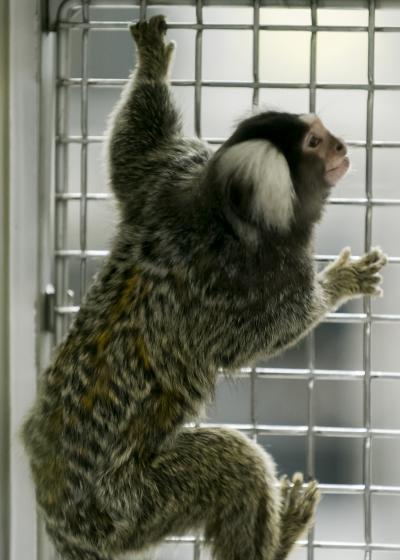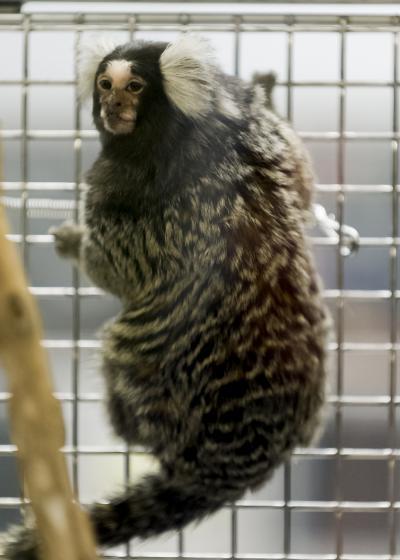SAN ANTONIO (April 10, 2013) — Baby marmoset monkeys that began eating solid food earlier than their peers were significantly more likely to be obese at 1 year of age, scientists at The University of Texas Health Science Center San Antonio and the Smithsonian Conservation Biology Institute found.
This early life obesity resulted in metabolic damage such as insulin resistance and poor blood sugar control, a companion study showed.
Marmosets on track for obesity appeared to be more efficient in their feeding behavior. "Although all animals consumed the same amount of liquid, the ones taking in more on each lick were the ones that later became obese," said Corinna Ross, Ph.D., lead author of one of the studies. Dr. Ross is instructor of cellular and structural biology in the School of Medicine of the Health Science Center and is based in the Barshop Institute for Longevity and Aging Studies.
Model of early life obesity
"With its small size and early maturation, we think the marmoset is going to be an exceptionally good model of early life obesity and offers many opportunities to further explore why youngsters become obese and what interventions may work to counteract early life obesity," said senior author Suzette D. Tardif, Ph.D., associate professor of cellular and structural biology in the School of Medicine and director of the marmoset research program at the Barshop Institute. The studies were conducted at the Southwest National Primate Research Center in San Antonio.
In previous studies, Dr. Tardif found that obesity patterns begin just 30 days after birth in the marmosets. A 30-day-old marmoset infant is the equivalent of a 5- to 8-month-old human infant. At 6 months of age, a marmoset is as old as a juvenile child before puberty. At a year old, the small non-human primate is the equivalent in age of a human adolescent.
The team monitored marmoset infant behaviors seven days a week to precisely document when each infant was weaned and ate its first solid food, Dr. Ross said. The team also observed 16 hours of liquid feeding using a device called a lickometer, as well as solid food feeding when the animals reached 3, 6 and 12 months old. Lickometer feeding mimics the way marmosets lick from sources in the wild, Dr. Ross said.

This is a lean marmoset monkey. A recent study noted differences in the feeding behaviors of lean and obese marmosets.
(Photo Credit: Photo taken at the Barshop Institute for Longevity and Aging Studies, The University of Texas Health Science Center at San Antonio, by Lester Rosebrock.)
Metabolic damage
Both research articles are in the journal Obesity. The second paper, with Michael L. Power, Ph.D., of the Smithsonian's National Zoological Park as lead author, reports on the metabolic consequences of early life obesity in the marmosets.
"The paper Mike led reveals just how damaging the obesity is in marmosets," Dr. Tardif said. "By the time of adolescence, they're already insulin-resistant."
Marmosets have significantly less body fat than humans, but in the marmoset it takes considerably less fat to generate metabolic dysfunction, she noted.
Animals that are going to be normal weight gain lean mass, such as muscle, at a faster rate than they gain body fat. "That's true for human children, as well," Dr. Tardif said. But marmosets that became obese gained both fat mass and lean mass faster than their normal-weight counterparts. This meant that the obese animals' percentage of body fat grew during infancy and adolescence.

This is an obese marmoset. Differences in the feeding behaviors of lean and obese marmoset infants were noted in a recent study.
(Photo Credit: Photo taken at the Barshop Institute for Longevity and Aging Studies, The University of Texas Health Science Center at San Antonio, by Lester Rosebrock.)
Source: University of Texas Health Science Center at San Antonio